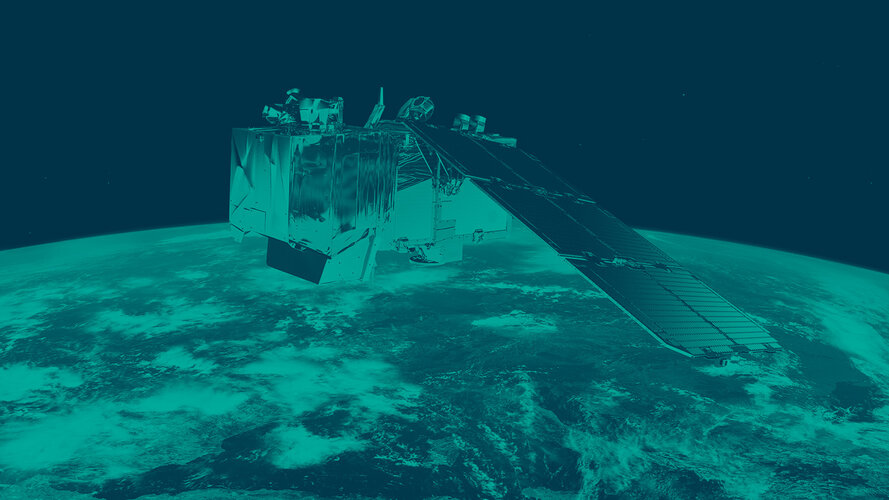Earth from Space: White Nile, Sudan
A part of the White Nile state in Sudan is featured in this false-colour image captured by the Copernicus Sentinel-2 mission.
Click on the image below to explore it in its full 10 m resolution.

White Nile is one of the 18 states of Sudan. Covering an area of around 40 000 sq km, the state is divided into four districts: Ad Douiem, Al Gutaina, Kosti and Al Jabalian. The area pictured here is located just north of Kosti, also spelled Kūstī, which lies on the west bank of the White Nile River (not visible).
This false-colour image, captured on 25 August 2021, was processed in a way that also includes information from the near-infrared channel and shows vegetation in tones of red. This band combination is routinely used to monitor vegetation health. Although the area lies within an arid climatic region, low vegetation covering the valley floors between the sand dunes can be seen in bright shades of red.
Many agricultural plots can also be seen in red, particularly in the far-right and far-bottom of the image. Agriculture plays an important role in Sudan’s economy. The country’s main crops include cotton, peanuts, sesame and sugarcane, while the main subsistence crops include wheat, corn, sorghum and millet. Several small villages can also be spotted in the image, with many of them visible near artificial water reservoirs (easily spotted with their rectangular shape) and are most likely utilised during the dry season.
Owing to seasonal rainfall, many ephemeral bodies of water can be spotted in shades of turquoise and blue in the image.
Flooding is common in Sudan in August and September. During these months each year, monsoon rains pour into the Ethiopian Highlands and flow down to the Blue and White Nile and can often lead to floodwaters swamping nearby communities. Starting in August 2021, a series of torrential downpours overwhelmed streams and rivers and unleashed floods in the area, with the White Nile being one of the hardest hit areas.
Copernicus Sentinel-2 has two satellites, each carrying a high-resolution camera that images Earth’s surface in 13 spectral bands. The type of band combination from Copernicus Sentinel-2 used to process this image is commonly utilised to assess plant density and health, as plants reflect near-infrared and green light, while absorbing red. Since they reflect more near-infrared than green, dense, plant-covered land appears in bright red.
This image is also featured on the Earth from Space video programme.


Access the video














 Germany
Germany
 Austria
Austria
 Belgium
Belgium
 Denmark
Denmark
 Spain
Spain
 Estonia
Estonia
 Finland
Finland
 France
France
 Greece
Greece
 Hungary
Hungary
 Ireland
Ireland
 Italy
Italy
 Luxembourg
Luxembourg
 Norway
Norway
 The Netherlands
The Netherlands
 Poland
Poland
 Portugal
Portugal
 Czechia
Czechia
 Romania
Romania
 United Kingdom
United Kingdom
 Slovenia
Slovenia
 Sweden
Sweden
 Switzerland
Switzerland





























